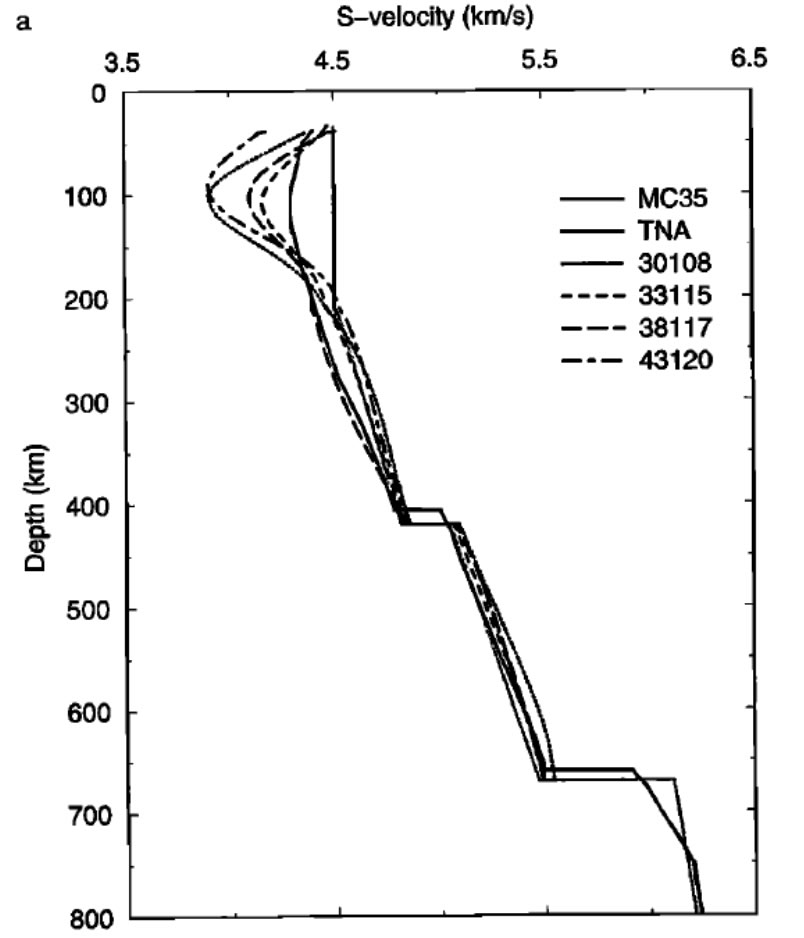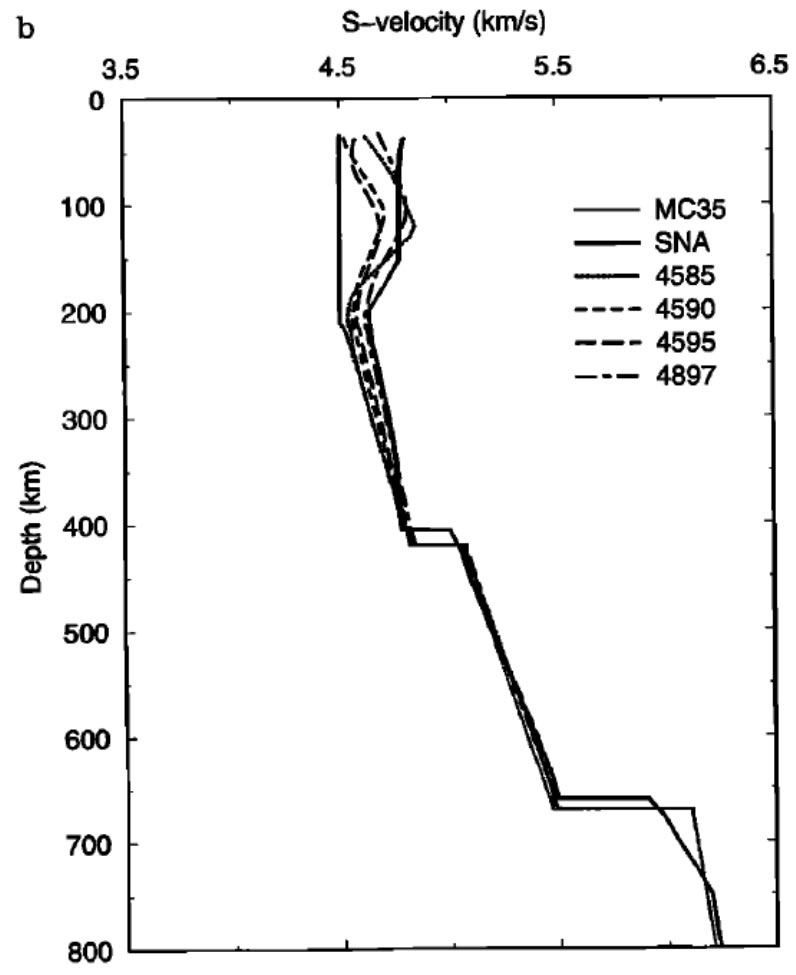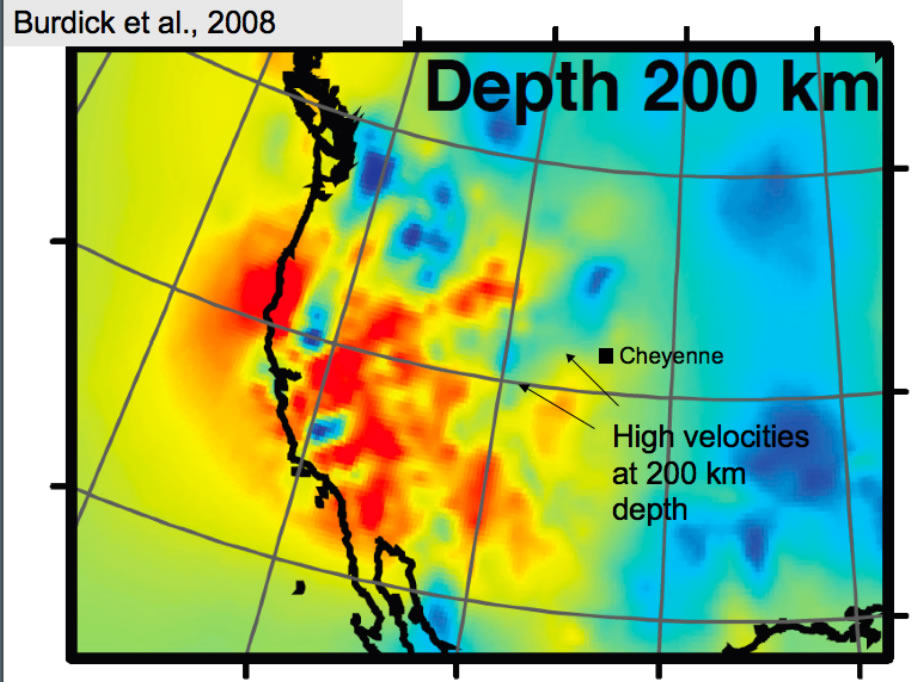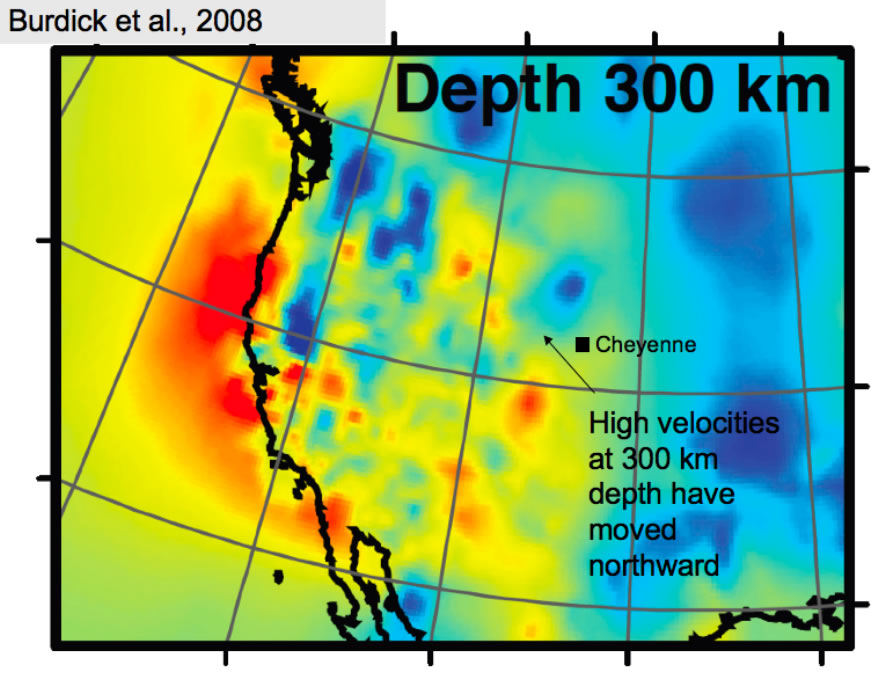

| Intro | Seismology | Heat flow | Gravity | Conclusions | References |
| Low velocity zone | Traditional techniques | ||||
| Mantle stratification (via receiver functions) | Admittance | ||||
| Coherence |
Seismology: Low velocity zone
Although both P wave and S wave velocities generally increase with depth. There is, however, a regions where velocities decrease (e.g. [Lerner-Lam and Jordan, 1987] ). It is thought that this zone represents the transition from stiff lithosphere to convective asthenosphere. The velocity change is most pronounced in oceanic regions; underneath continents this transition may be more gradual and thus more difficult to resolve.


The figures above (from [Burdick et al., 2008; van der Lee and Nolet, 1997]) contrast S wave velocities beneath Basin and Range stations (left) and stable North America stations (right). Note the greater depth and lower amplitude of the low velocity zone underneath the cratonal stations.


Recent P wave tomography (above; [Burdick et al., 2008]) shows variations in the thickness of high velocities under the Wyoming Craton, deepening to the north.